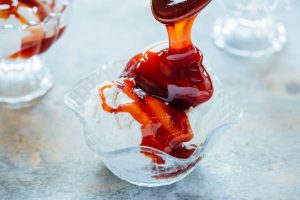We retooled the classic pound cake recipe to make it ultraplush every time. Our first big discovery was to start with chilly 60-degree butter, since room-temperature butter became too warm after all the creaming that was needed to combine the large quantities of butter and sugar in the cake. We found that the eggs also needed to be at 60 degrees so that they would not deflate the batter as they were added. Finally, we chose cake flour (all-purpose flour was too protein-rich and delivered dry, tough cakes), but the flour’s softness required that we not overwork the batter when adding it. Sifting the flour over the batter and folding it in by hand was the method that worked best.

- Ingredients
16 tablespoons unsalted butter, chilled, plus extra for greasing pan
3 large eggs plus 3 large yolks
2 teaspoons vanilla extract
1 ¾ cups (7 ounces) cake flour, plus extra for flouring pan
½ teaspoon salt
1 ¼ cups (8 3/4 ounces) sugar
Instructions
As directed in the recipe, the butter and eggs should be the first ingredients prepared so that they have a chance to stand at room temperature and lose their chill while the oven heats, the loaf pan is greased and floured, and the other ingredients are measured. Leftover cake will keep reasonably well for up to three days if wrapped tightly in plastic wrap and stored at room temperature.
1. Cut butter into 1-tablespoon pieces and place in bowl of stand mixer; let stand at room temperature for 20 to 30 minutes to soften slightly (butter should reach no more than 60 degrees). Beat eggs and yolks and vanilla in 2-cup liquid measuring cup until combined. Let egg mixture stand at room temperature until ready to use.
2. Adjust oven rack to middle position and heat oven to 325 degrees. Generously butter 9 by 5-inch loaf pan; dust pan liberally with flour and knock out excess.
3. Fit stand mixer with paddle and beat butter and salt on medium-high speed until shiny, smooth, and creamy, 2 to 3 minutes, scraping down bowl as needed. Reduce speed to medium and gradually pour in sugar (this should take about 60 seconds). Once all sugar is added, increase speed to medium-high and beat until mixture is fluffy and almost white in color, 5 to 8 minutes, scraping down bowl as needed.
4. Reduce speed to medium and gradually add egg mixture in slow, steady stream (this should take 60 to 90 seconds). Scrape down bowl. Increase speed to medium-high and beat mixture until light and fluffy, 3 to 4 minutes (mixture may look slightly broken). Remove bowl from mixer and scrape down bowl.
5. In 3 additions, sift flour over butter mixture; after each addition, fold gently with rubber spatula until combined. Scrape bottom of bowl to ensure that batter is homogenous.
6. Transfer batter to prepared loaf pan and smooth surface with rubber spatula. Bake until golden brown and wooden skewer inserted in center of cake comes out clean, 1 hour 10 minutes to 1 hour 20 minutes. Let cake cool in pan on wire rack for 15 minutes; invert cake onto wire rack, then turn cake right side up. Let cake cool completely on wire rack, about 2 hours. Slice and serve.
Technique
Slow As You Go
Pound cake batter is so delicate that it will deflate if you add the eggs one at a time or add the flour too quickly, as most recipes suggest.

EGGS: : With mixer running, pour in beaten egg mixture in slow, steady stream.
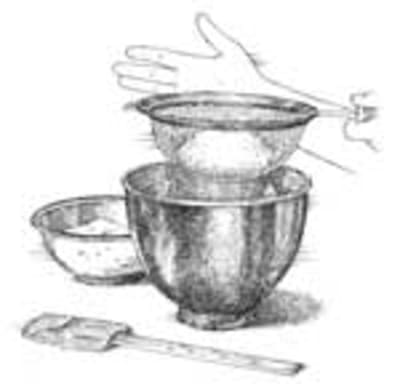
FLOUR: Sift flour over batter in three additions, folding in each addition with spatula.
Recipe Testing
Unsuccessful Creaming
Cool butter and thorough mixing are essential to our pound cake recipe. These photos demonstrate unsuccessful creaming.

OVERCREAMED BATTER: Once sugar has been incorporated, butter temperature will rise to about 75 degrees. Batter will be very soft and look slick, shiny, and wet.
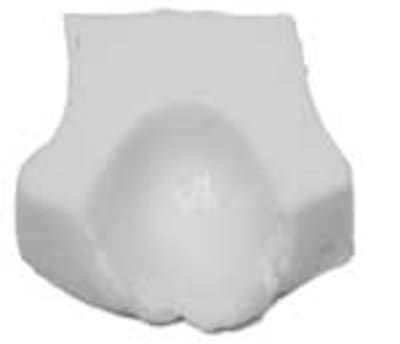
ROOM TEMPERATURE BUTTER: Room temperature butter (70 degrees) yields completely to pressure.
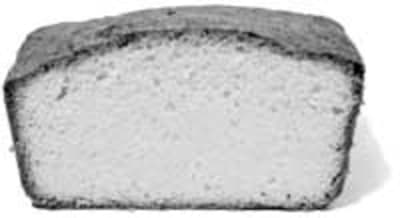
FLAT CAKE: Cake will be flat and dense.
Recipe Testing
Successful Creaming
Cool butter and thorough mixing are essential to our pound cake recipe. These guidelines will help you determine when the butter is at the correct temperature and when the butter and sugar are properly creamed.
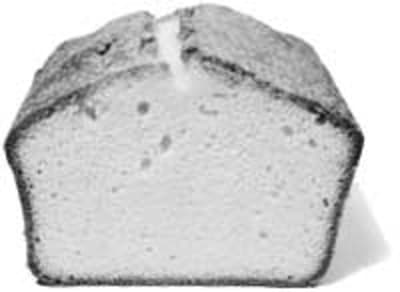
DOMED CAKE: Cake will dome nicely.
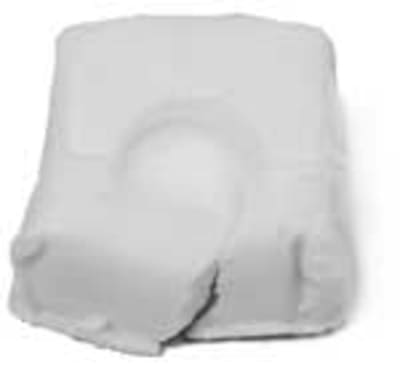
CHILLY BUTTER: Cool butter (60 degrees) yields slightly to pressure and will crack when pressed.

PERFECTLY CREAMED BATTER: Once sugar has been incorporated, butter temperature will rise to about 68 degrees. Batter will be light, fluffy, and off-white in color.

